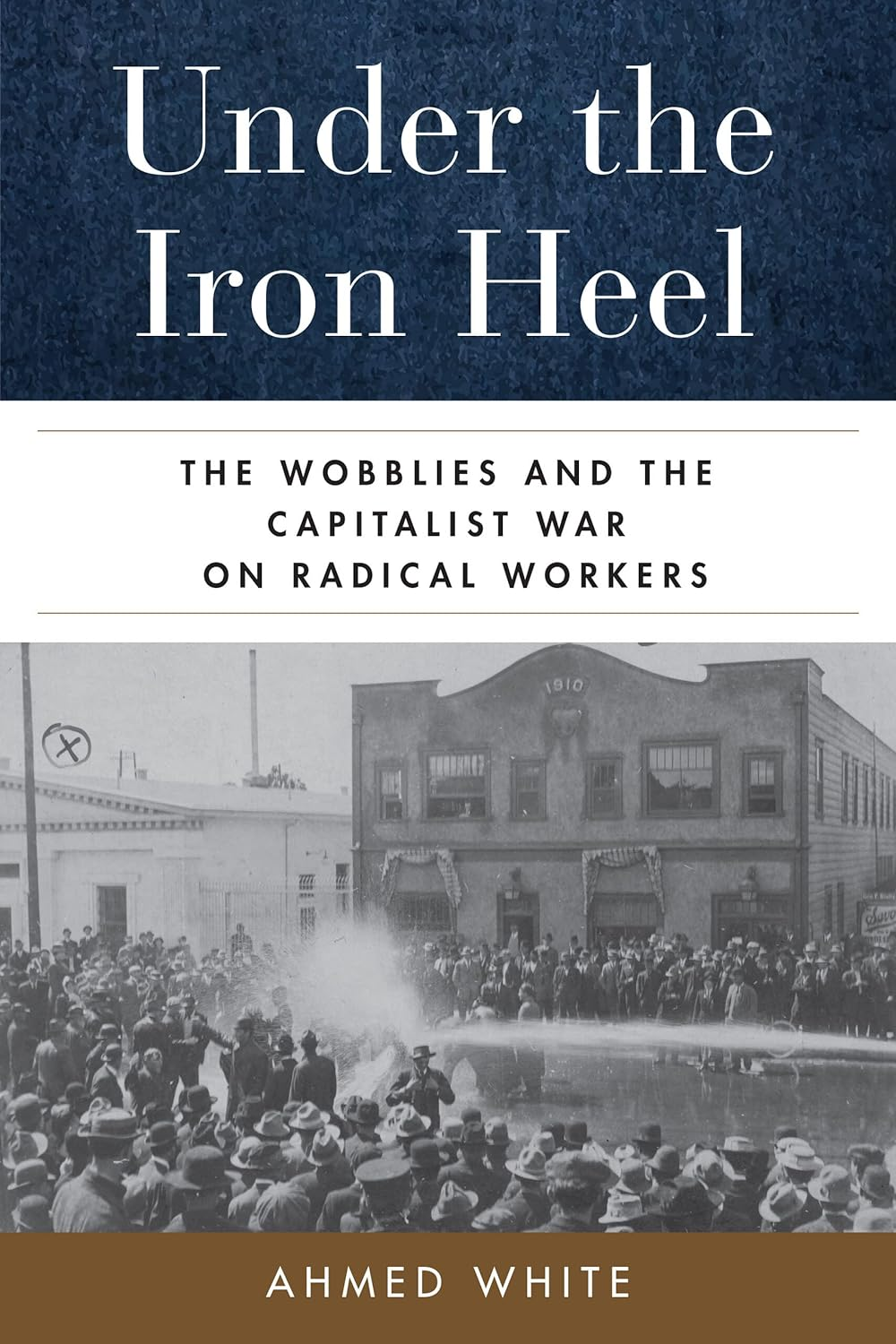In Under the Iron Heel, Ahmed White memorializes the One Big Union by telling the lamentable story of its crushing during World War I and the Red Scare that followed. A law professor, White focuses on the legal means by which the state—on the federal, state, and local levels—tormented and persecuted its members, while offering an extended brief in defense of what the IWW was struggling to accomplish. He takes his title from The Iron Heel, a dystopian 1908 novel by Jack London about an anti-worker “Oligarchy” whose brutal rule presaged the history of fascism. Proceeding state by state and trial by trial, White describes, in vivid prose, “the vast scale and comprehensive reach” of this repression by governments and private employers, illustrating “how in wrecking lives it also wrecked the union.” While White’s narrative of this legal assault is impressive, he does not wrestle with the ways in which the IWW’s own ideology and tactics limited its growth and gave its enemies an excuse to attack it. The same Wobblies who could be such skillful organizers did little to build a strong and durable organization.
In White’s telling, the most powerful legal weapon that prosecutors used to pummel the Wobblies was a new breed of laws designed for just that purpose: acts to punish “criminal syndicalism.” The statute, first passed overwhelmingly by the Idaho Legislature in 1917, set the precedent for other states. The bill, White explains, “made it a felony…to advocate or organize for, become a member of, or assemble with any organization that advocated” the newly created crime of using “violence, terrorism, and, notably sabotage” to bring about “social change.”
Since the IWW’s publications did, at times, advise unhappy workers to try a bit of sabotage when their foremen or bosses sought to lengthen their hours or decrease their pay, the new laws threw the union on the defensive. “The class struggle is a physical struggle and depends on physical force,” one IWW journalist wrote. A claw-brandishing “sab cat,” hued either tabby or black, had appeared on countless Wobbly leaflets and stickers. Organizers gently prodded workers to snarl up a machine or rip up sacks of grain. Yet while the union’s rhetoric and imagery often welcomed physical conflict, rank-and-file members rarely resorted to violence, even during strikes; they knew their heavily armed adversaries could quash their movement if they did.
In the end, however, although the IWW’s members rarely used sabotage, they were routinely prosecuted for allegedly threatening to do so. Cowed by the letter of the criminal-syndicalism laws, few juries had the courage to acquit defendants whose only true crime was to encourage working people to defend their interests, albeit in militant ways. Hundreds were arrested and jailed under these laws, and many more dropped out of the movement for fear of facing a prosecution that could have destroyed their lives.
